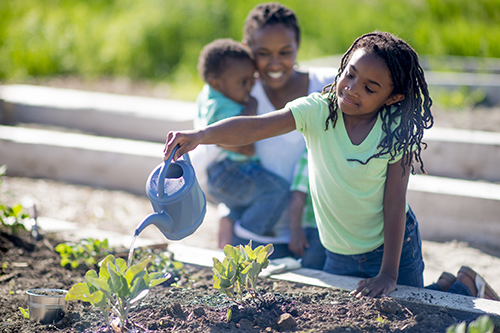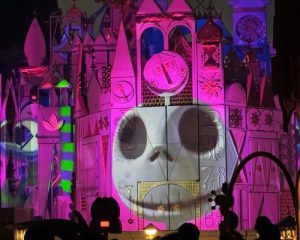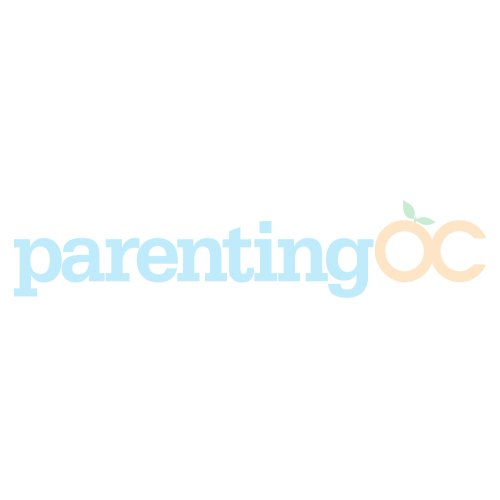
Planting a native garden can benefit the family as well as local wildlife.
Have you ever seen the cedar waxwing bird, with its crest, black mask, clear shades of yellow and rust, and feathers so smooth they don’t look like feathers?
If not, you probably haven’t been hanging around toyon bushes in the late fall and winter, when they develop the red berries that this bird loves. The native bushes, which grow on hills all around Orange County, also are terrific, easy-to-grow garden plants, drought-tolerant, fire-resistant (did you know that fire-resistant plants can help protect your property during a wildfire?), low-maintenance and green year-round.
In a place as warm and dry as Southern California, a garden is more than a summer barbecue spot. It is a nearly year-round extension of our living space, and its calm and connection with nature relaxes us while engaging our senses. The great neurologist and author Oliver Sacks wrote, “In 40 years of medical practice, I have found only two types of non-pharmaceutical ‘therapy’ to be vitally important for patients with chronic neurological diseases: music and gardens.”
In addition to being an outdoor space for family, your garden can be a welcoming place for birds, bees and butterflies, providing not just habitat for native wildlife but additional wonders for human observers. I set up my laptop table at a French door overlooking my backyard. With only a few additions to the garden, it became a brilliant hive of activity that I watch all day.
Installing the plants and accessories that will attract wildlife is a fun family activity — adding a field guide for identifying your guests provides young children with a fascinating introduction to nature. You also can involve them in family crafts such as making bird feeders and bird baths (easy) and birdhouses (a little more challenging).
California bush sunflower is an easy plant to grow, even on steep hillsides. Its bright yellow flowers and dark seeds attract butterflies, bees and goldfinches, and unlike most wildflowers, these are good for indoor cuttings. Dana Point buckwheat — yes, it originated in this county — will grow in almost any soil and attract bees and butterflies. In autumn, its seed heads turn a beautiful copper color.
Ceanothus is a deep-green plant with blue flowers — it’s our wild lilac — that attracts a large variety of butterflies and serves as host plant for the showy ceanothus silk moth. Though in nature it’s generally a very large shrub, hybrids have been developed to grow to smaller sizes — there’s even a creeping one that provides excellent ground cover. The plant is green year-round, drought-tolerant, fire-resistant and perhaps my favorite quality: disliked by gophers!
Hummingbirds like tubular flowers such as heart-leaved penstemon and California fuchsia flower.
Don’t forget about milkweed, the host plant for monarch butterflies. They’ll lay their eggs on the plant, providing a fascinating chance to observe the yellow, black and white striped caterpillars encase themselves in jade-like, gold-dotted chrysalises, before your nectar-flower plants attract the orange-and-black adult butterflies. Most entomologists advise planting native milkweeds such as the narrow-leaved variety, rather than the tropical plants, which have been associated with various health problems for the monarchs.
Winter rather than spring is the right time to plant most natives, following their natural lifecycle.
In a nature garden, too much tidiness is a bad thing. Naturally growing bushes of various sizes make great spots for birds to nest and hang out. Leaf litter on the ground is the stuff that the spectacular spotted towhee likes to scratch around in and also provides natural habitat for California’s native bees, which rarely sting, do a wonderful job of pollinating, and have been suffering reduced populations. Avoid using pesticides and herbicides or your living garden could become more like a death trap for wildlife. Fortunately, native plants don’t need them.
The grand old standby of native plant sellers is still Tree of Life Nursery on Ortega Highway, right next to Caspers Wilderness Park. It’s worth the field trip, and the staff is exceptionally knowledgeable.
Consider adding some large garden stones in sunny areas for butterflies to warm themselves. Bird baths attract a wide variety of birds and you can easily make one by placing a large terracotta saucer or other non-reflective pan on a stand — a stack of flat rocks; an unused, sturdy tomato cage; or an old plant stand would work — and adding an inch or two of water.
Bird feeders will bring in more winged visitors. Hummingbird feeders are inexpensive and wonderful at attracting these whizzing, darting birds, and their food is simply sugar water that you mix yourself. This year, I also tried an oriole feeder, which uses plain grape jelly, and within two weeks, was visited throughout the days by brilliant yellow-and-black hooded orioles. Don’t hang these feeders until June — hooded orioles are summer visitors to Southern California.
The Mission Viejo store Wild Birds Unlimited specializes in bird feeders. Wild Birds Unlimited also has other Orange County locations in Huntington Beach and Yorba Linda.
There also are many simple-to-make seed bird feeders instructions online that use empty soda bottles or old milk cartons. For the latter, just rinse the carton out well, cut a good-sized hole about halfway up, and if you want, insert a thin rod all the way through both sides, an inch below the hole, as a perch. Kids can decorate it with non-toxic paint, then fill it with a good-quality wild-bird seed. Many birds like black-oil sunflower seeds or white millet.
Hang your feeder in a place where squirrels can’t get to it and wait for your first colorful visitors.
By Karin Klein






Leave a Reply